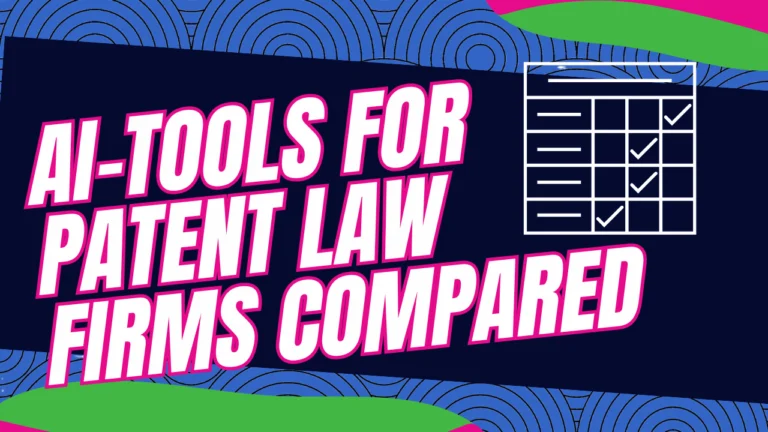AI isn’t just for tech companies anymore. It’s showing up in law firms too, especially for those working in patents. Whether you’re helping solo inventors or working with small businesses, the right AI tools can save time, cut mistakes, and make your work a lot easier.
In this guide, we break down the top AI tools for three things most patent firms do every day:
- Prior art and patent searching
We also look at how your clients, team setup, and work style can help you choose what tools to use.
Prior Art & Patent Search Tools: What’s Already Out There?
Before filing a patent, you need to know if the invention is really new. That means digging through existing patents and sometimes research papers.
Here’s a chart showing 10 AI tools that help with this:

Thoughts for Law Firms:
- If your clients are solo inventors or small startups, look at PQAI, The Lens, or XLSCOUT. They’re simple, low-cost, and easy to learn.
- If you’re a remote or hybrid firm, Amplified or Patent Bots might be a better fit. They work in the cloud and don’t need much setup.
- If you handle big portfolios or have a larger team, consider PatSnap or Derwent. They’re powerful, but not cheap or beginner-friendly.
A few things to think about:
- If you’re flying solo, tools that are simple and affordable will help most.
- Some clients (like in biotech or software) may care more about research articles. Look for tools with good NPL coverage.
- If your team uses Word or docketing tools, make sure your AI tools plug in easily.
Patent Application Drafting: Get It on Paper
Writing a patent can take hours. Claims, drawings, language that checks all the legal boxes, it’s a lot. AI can help with the first draft, clean up claims, or make sure everything flows.
Here are 10 tools patent professionals use to speed things up:

Thoughts for Law Firms:
- Helping first-time inventors? Try PatentPal, Rowan Patents, or Autodocs.ai. These tools are user-friendly and even make drawings.
- If your office still works mostly in Word, look at ClaimMaster or DocXtools Companion. They’re familiar but not built for remote teams.
- If you’re already using cloud apps or no-code tools, you’ll like PowerPatent, Gavel, or Genie AI.
What matters:
- If your team doesn’t have a paralegal or illustrator, tools with built-in drawing support can be huge.
- Look for export options that match USPTO formats. It saves time and avoids rework.
- If your clients are hands-on, choose something that’s easy for them to review and edit.
Patent Prosecution: From Office Actions to Allowance
You filed the patent. Now comes the back-and-forth with the examiner. Responses, tracking, and strategy all matter. AI tools can help you stay on top of it and avoid mistakes.
Here’s a look at 10 popular tools for patent prosecution:

Thoughts for Law Firms:
- If you’re running a small firm and handling a few dozen filings a year, check out Patent Bots, Rowan Prosecution Suite, or ClearstoneIP.
- For solo work, Ambercite or the USPTO Patent Center AI are simple and do the job.
- If you’re managing large portfolios or reporting to stakeholders, Juristat, Anaqua AQX, or Dolcera might be worth the investment.
Keep in mind:
- Tools that work in the cloud make life easier if your team or clients are spread out.
- The more clients or patents you track, the more important dashboards and automation become.
- If you’re doing freedom to operate (FTO) work, ClearstoneIP is built for that.
Final Thoughts
The best tool for one firm might be totally wrong for another. You’ll want to think about:
- Who your clients are
- How your team works
- What part of the job slows you down most
Start small. Pick one tool for one task, maybe it’s drafting or searching. Try it on a real case. See what clicks.
The goal isn’t to go fully digital overnight. It’s to make life easier and get more done without burning out.
Ready to navigate the complex world of patent search and protection with the right AI tools for your practice? Working with an experienced patent attorney who understands both traditional patent law and modern AI tools can help you implement the right solutions for your firm.
Contact us today to discuss which AI solutions align with your client base and workflow.

